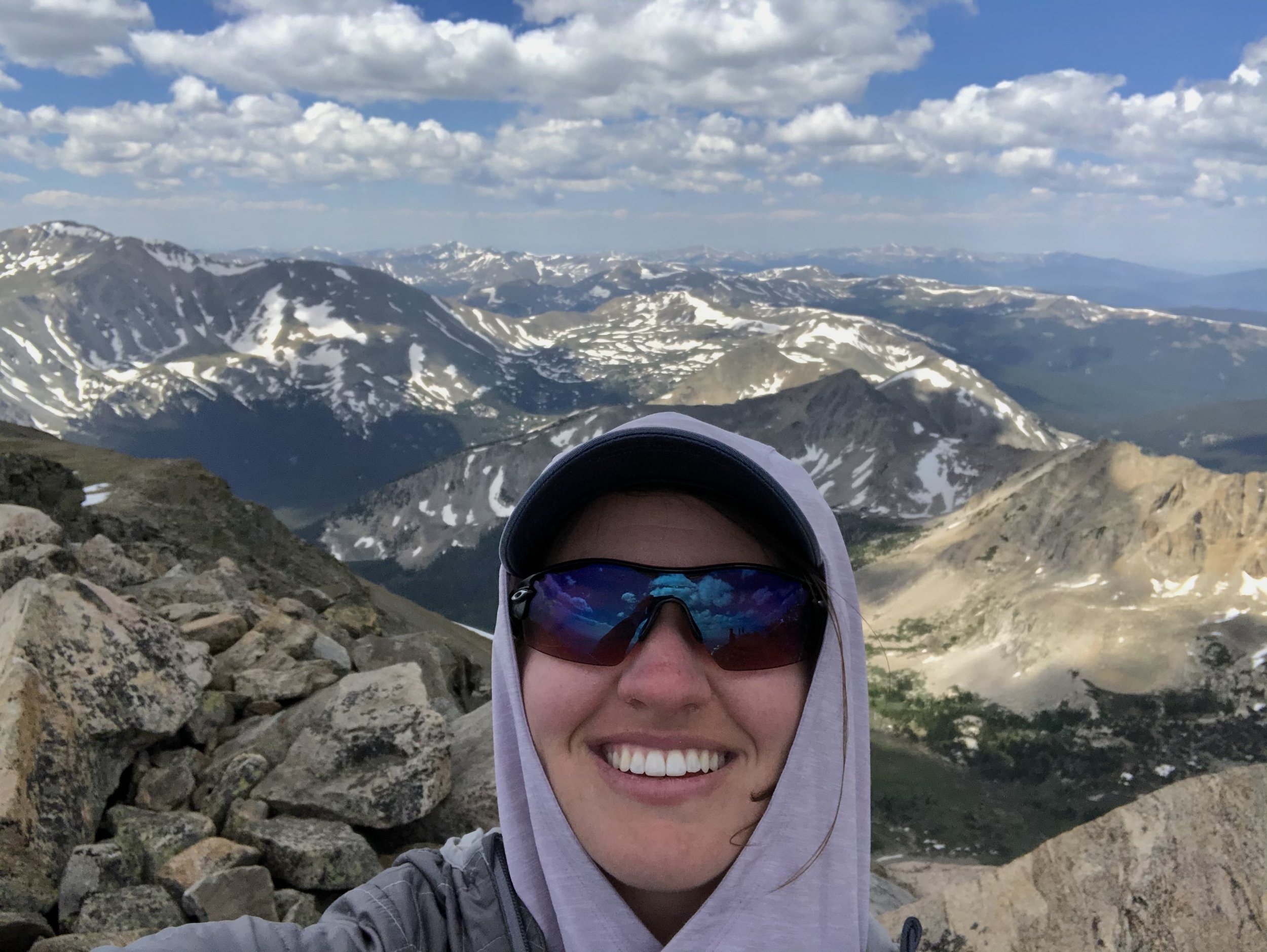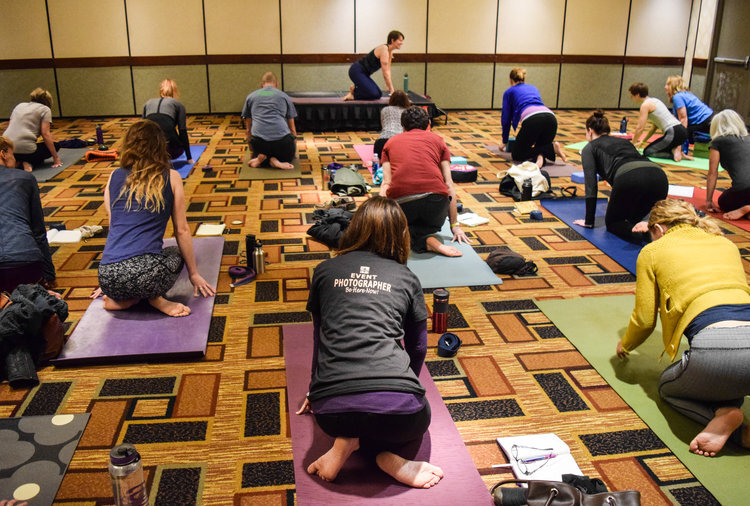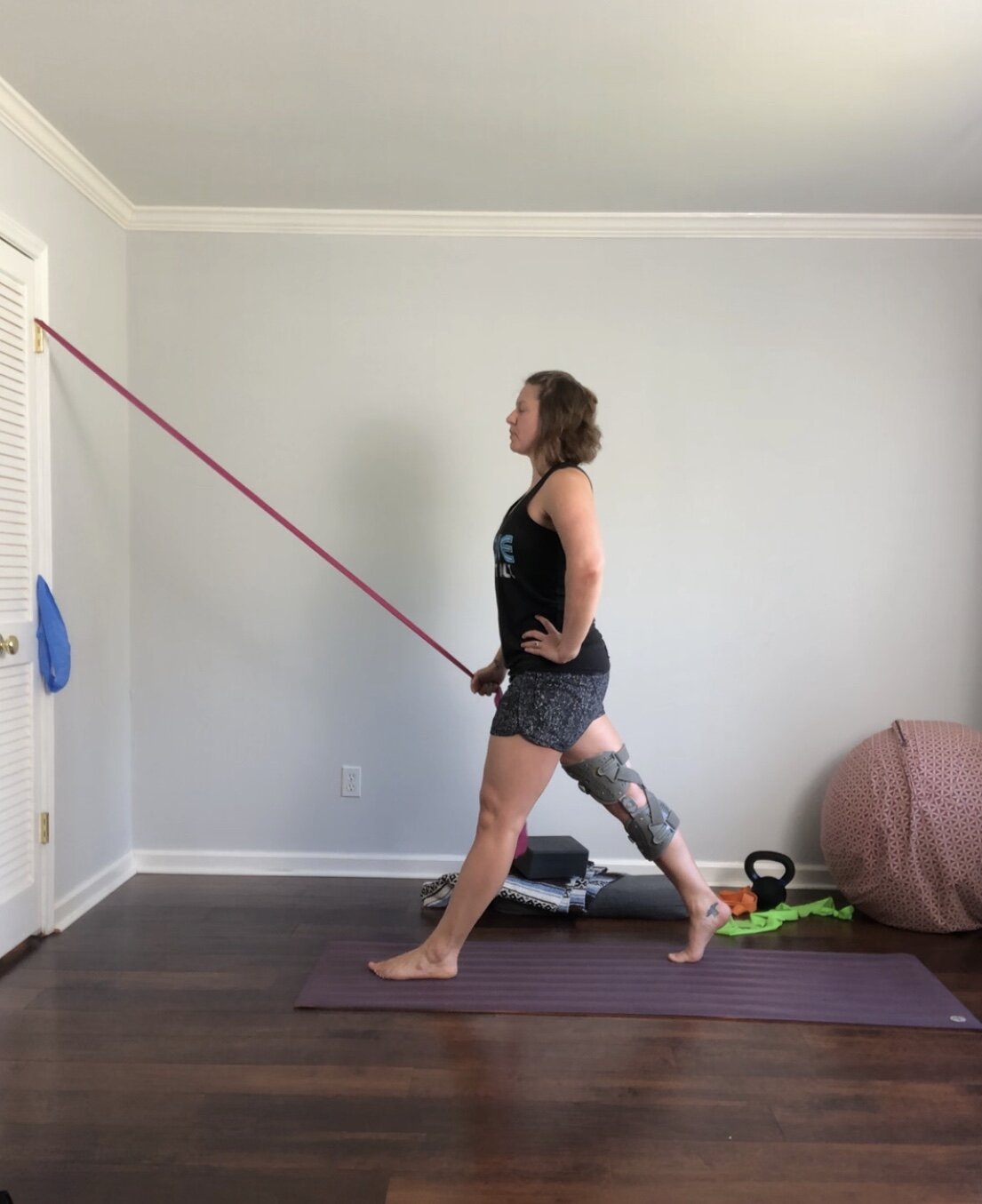Tiffany Denny
Physical Therapist | Yoga Therapist | Movement Optimist
She/Her/Hers (why are these here?)
I love to encourage people of all ages, backgrounds, and abilities to move with curiosity and with confidence.
I became a yoga student in 2002 and have been teaching yoga for over 20 years. I was inspired through my yoga practice and by some of my yoga teachers to become a physical therapist, and received my Doctor of Physical Therapy degree in 2011. I specialize in orthopedic physical therapy and trained in pelvic health, neurological physical therapy, and vestibular therapy. My yoga teacher trainings centered Anusara Yoga and Iyengar-influenced yoga, though I have also explored trainings in vinyasa/flow styles as well as accessible and trauma-centered yoga.
My approach to teaching yoga asana encourages exploration starting from what a person CAN do in any given moment, and I specialize in fitting poses to bodies, not the other way around. I believe there is no one right way to move or to practice, and therefore my focus is on helping clients understand both the human body and the subject of yoga well enough to find their own unique approach to practicing and/or teaching.
Movement science, pain science, and movement optimism, blended with concepts of body neutrality, body trust, and Health at Every Size®, create the context from which I teach. It is important to me that people have the option to approach movement in collaboration WITH their body, not against it, and with curiosity and compassion, not fear.
I love dispelling myths about the "shoulds" and "should-nots" of movement and yoga asana, and I love challenging my own beliefs.
Let’s work together to build your capacity and reveal your body’s resilience.
I come to this work as a white, cisgendered, heterosexual, able-bodied, thin-privileged woman living on land historically belonging to the Ute people. I hold many life experiences, and my experiences are influenced by the identities named above as well as many others. I cannot know how my teaching is experienced by others with differing identities and lived experiences, but I do try to be mindful of my language, behavior, and the messages I send through my work, either intentional or unintentional. I am open to feedback if your experience of me has not aligned with my stated intention of inclusivity and mindfulness.
Thank you so much for joining me in practice!
Licenses & certs
Licensed Physical Therapist (PT)
Former Board-Certified Orthopedic Specialist (OCS) from the American Board of Physical Therapy Specialties
Certified Yoga Therapist (C-IAYT) through International Association of Yoga Therapists
E-RYT (Experienced Registered Yoga Teacher) and YACEP (Yoga Alliance Continuing Education Provider) from Yoga Alliance
Former Embody Love Movement Faculty member, Certified Facilitator, and Board Member
Training & Education
Doctor of Physical Therapy (DPT) from Texas Women's University
Bachelor of Science degree in Exercise Science from University of South Carolina
200-hour Anusara Yoga Teacher training with Stacey Collins, Sarah Faircloth, and Kelley Gardner
300-hour Advanced Yoga Teacher Training with Christina Sell and Gioconda Parker
Credentials and training are useful, no doubt, but if you’d like to know a little more about my background and how it translates into practice, and if you like way more information than is necessary, then this section is for you!
Both my horses are in this photo — the baby, Ginger, in the foreground, and David with his head stuck through the fence in back! I taught horse camp to help pay for board and lessons.
I grew up sharing my loves and interests with other people. For example, I shared my favorite songs with my family on road trips by loudly singing along with the songs playing through my headphones. Soon, however, I learned to share in more palatable ways. In middle school, I became a horse camp counselor at Heritage Hill Equestrian Center, spending 8 hours a day all summer outside, teaching kids younger than me how to ride and care for horses, making up silly games, and cooking hot dogs. It was pretty great. It was also very hot, as I grew up in Texas, but I think I was always having so much fun that I grew to love that oppressive heat. Maybe that was my first real experience in managing my psycho-emotional state amidst discomfort.
In high school, I spent two years as drum major for my marching band of nearly 400 people.
High school is also when I began practicing yoga, and when I started having surgeries. I had an ankle surgery somewhere around 8th grade, then was diagnosed with thyroid cancer in 9th grade. I had two surgeries for that (I have no photos of this - I probably didn’t let people take any). Somewhere around my junior year, my mom began teaching yoga, and we would sometimes go to vinyasa classes together at the gym. She also brought home a DVD of Richard Freeman teaching the Ashtanga Primary Series, which I would practice until the gymnastics and contortions started. Then I would sit and watch in awe, seeing how closely I could mimic the shapes, and giggling at Freeman’s use of the phrase, “Bloom the buttocks.” I invited my friends over to try it with me.
I also invited friends to on-campus yoga classes with me while in college, and I began teaching yoga my freshman year because, well, there was a need. I taught group yoga classes all four years and found a truly wonderful studio at which to practice and learn. You can go there now. It’s called City Yoga, in Columbia, SC. I also began attending yoga conferences, which is where I met Julie Gudmestad, a senior Iyengar instructor and physical therapist. The week after my first yoga conference, I changed my major to exercise science so that I would be on-track to become a physical therapist. Senior year, I wrote my honors thesis about yoga, focusing on yoga asana and its therapeutic capabilities.
Me with some of my favorite teachers from City Yoga <3
TFW you have to wear a silly hat, but finally get to be “Dr. Tiffany”
Upon graduation I moved back to Texas for physical therapy school, and figured it might be nice to intensify my yoga studies and build a community in the area. I loved Anusara Yoga from my time at City Yoga, so I began the yoga teacher training process with a philosophy and practice immersion taught by local Anusara teacher, Becky Klett (you can practice with her too, at the Denton Yoga Center). I completed my 200-hour training by traveling back to the Carolinas for an Anusara Yoga teacher training. I loved the style, but could not commit to it exclusively, as I am resistant to dogma, and had benefited so much from diversifying my studies at yoga conferences and by practicing at different studios. I was also becoming a physical therapist, and began realizing that common asana cues don’t always align with movement science, and definitely don’t suit every body. I started to infuse my yoga teaching with knowledge and tools from my healthcare training, and my physical therapy practices with wisdom and techniques from my yoga education. It was a time of immense learning, and really kickstarted my tendency to question “conventional wisdom” in all its forms.
It was an ACL reconstruction and an ankle surgery simultaneously — ahh little Tiffany, so naive.
In 2013, after two years of practicing as a physical therapist, I tore my ACL. With all my vast (sarcasm) experience, I knew that I’d have the surgery, rehab, get married 6 weeks later, and move on with my life. I was wrong about that -- well, I did have surgery and get married, but the getting on with life didn’t quite happen as-expected. My first surgery failed, and in the same year I had a second, more complex surgery. My rehab was slow, and I struggled with increased pain and anxiety in my work as a clinician, while also seeing a major shift in my ability to practice asana as I once had.
Eventually, I decided to decrease my hours as a physical therapist and open a yoga studio in Fort Worth, TX. I began working as a pelvic health therapist with the help of amazing mentors and trainers, and worked on a business plan with my husband and business partner. It was also around this time that I went to a workshop led by my friend, fellow yoga teacher, and psychologist, Dr. Melody Moore. She had started a nonprofit called Embody Love Movement, which offered programs on body image to women and girls, and she invited me to one. It opened my eyes to so much about my own body image, but more than that, it revealed to me my own conditioning around perfectionism and my worth as a person. The timing could not have been better, as my physical condition brought up so much struggle for me around my identity and my value. My involvement in this organization grew, and I became an Embody Love Movement facilitator so that I could relay the message to others. I also felt it important that the culture of my yoga classes and my yoga studio reflect body acceptance and inclusivity. It took a little time before I developed some awareness around all the ways I could have better cultivated an inclusive space, because it took time for me to connect body acceptance with body liberation and the kind of social justice where all facets of marginalization and discrimination intersect.
Nevertheless, my yoga studio, 3Tree Yoga, opened about a month after my third knee surgery, and I felt so welcome in the small but delightful Fort Worth yoga community. 2015 was a year of community-building, business-building, private practice, and pain. I ended up spending months cycling through PRP treatments on my knee and ankles, which meant I spent a lot of time teaching from a chair or on crutches. Still, I was growing my business, growing my yoga therapy practice, and I decided to begin an advanced yoga teacher training with a yoga instructor I had long-admired, Christina Sell, and another instructor I would grow to cherish, Gioconda Parker. It was a two-year endeavor, and it was worth every second and every dollar.
In 2016, I thought I was getting back to my physically-active, travel-happy self (of course, I thought going “back” was the answer). I taught at yoga conferences and events, strength-trained, returned to playing beach volleyball, and trained to become a faculty member at Embody Love Movement. And, something was wrong with my knee. It was extremely unstable. Again. My doctor was floored, and asked that I get other opinions, so I did my research and saw five different surgeons before choosing to work with Dr. Robert LaPrade, a complex knee surgeon out of Vail, Colorado.
Between 2017 and 2020, I would have three more complex knee surgeries and spend months on crutches and in physical therapy. I would sell my yoga studio and get jobs as a physical therapist, only to have to quit due to more surgery or the eventual onset of mysterious, persistent, multi-region pain. I would feel my mental health, and my identity challenged more severely than ever before, yet I continued to return to my yoga practice, ever-shifting, but ever-present. In all honesty, yoga practice was probably the most consistent thing I had at the time, so I would simply continue to engage with it. I’m grateful that thing for me was yoga and not something destructive. It occurs to me that that “stable” thing to which I clung could have just as easily been something else.
You know, the great thing (great is a pretty strong word, but we’ll go with it) about having had so many surgeries is that I really got to compare how the experience differs based on the circumstances, the environment, my support structure, and most noticeably, my own mental state and the state of my practice. I had a plethora of opportunity to experience physical and psycho-emotional discomfort to various degrees, so I could apply the teachings of yoga in these moments. Often, the result was that I could make it to the next moment. It really wasn’t very glamorous or miraculous. It’s just that steady practice slowly made the ups and downs feel less distant from one another, which meant I wasn’t constantly high above the clouds or down in a pit. You can’t see the way forward from either vantage point, so what the practice really continues to give me is this ability to see new perspectives and different options with less binary judgment and more equanimity. Over time, I saw that healing is not an all-or-nothing process, and that neither bodies nor the humans inside of them benefit from systems that value perfection and hold up a narrow standard of what “perfect” looks like, moves like, eats like, loves like, and lives like (written with apologies to any fellow grammar-lovers).
Once I finally stopped having surgeries (knock on wood), I experienced first-hand (first-leg?) what it was like to build capacity from zero to strength training, beach volleyball, and summiting 14ers. I dove into continuing education around biomechanics and progressive overload, and was inspired by my ongoing exploration and education in pain science. And through it all, I’ve never ceased wanting to share what I love and what I’ve learned with others, whether I’m teaching a module in a yoga teacher training, nerding out while leading a workshop, or coaching an individual.
The summit of Mount Columbia, 14.077’
Using some assistance to work on this squat variation. Now I don’t need it!
Learning a new skill.
I know what it feels like to be lost, to be angry, to be in pain, and I know what it feels like to “succeed” and to shine. I think both states have their utility. My hope is that when I teach, or present, or provide therapeutic services, that my unique blend of personal and professional experience helps me to share what I know in ways that instigate hope, curiosity, critical thinking, trust in oneself, and trust in the process, whatever that process happens to be for an individual. And, if all else fails, I’ll make use of a bad joke or nerdy reference so that we can benefit from that famous laughter-medicine.
































